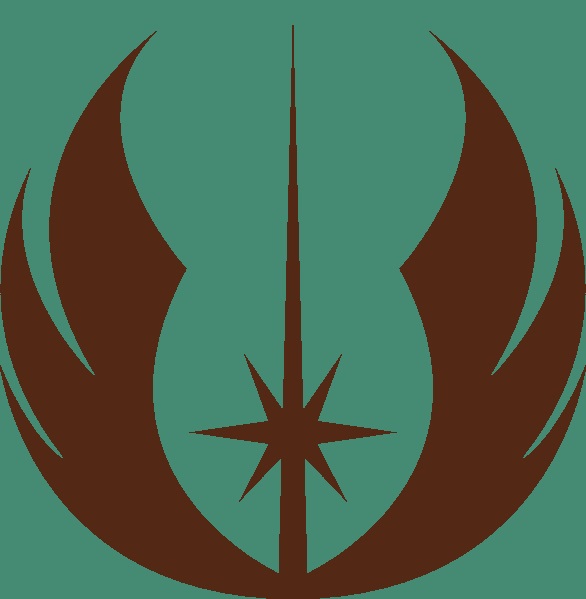| T-65 X-Wing Fighter: |
|---|
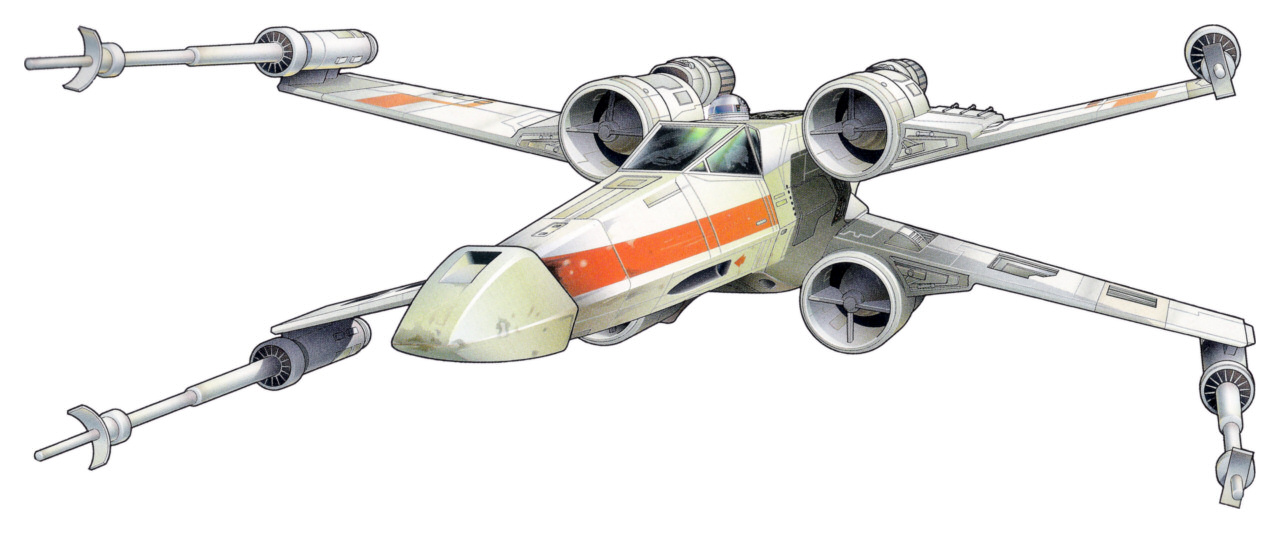 | | Production Information: |
|---|
| Manufacturer: | Incom Corporation. |
|---|
| Designer: | Vors Voorhorian. |
|---|
| Line: | X-Wing starfighter. |
|---|
| Model: | T-65. |
|---|
| Class: | Starfighter. |
|---|
| Cost: | 25 millioncredit to build. |
|---|
| Technical Specifications: |
|---|
| Length: | 41 feet (XXm). |
|---|
| Max Wignspan: | 39 feet 4⅞ inches (12m). |
|---|
| Clearance: | 13 feet 1⅕ inch (4m). |
|---|
| Max Acceleration: | 3,700 G;16 MGLT/s. |
|---|
| MGLT: | 100 MGLT. |
|---|
| Max Atmospheric Speed: | 652⅖ MPH (XXkph); Higher speeds possible with deflector shields on). |
|---|
| Powerplants: | Quad Incom 4L4 fusial thrust engines; Rating: 300 KTU. |
|---|
| Alternate: Quad Incom 4j.4 fusial thrust engines (4). | | Hyperdrive Rating: | Class 1.0;No backup. |
|---|
| Hyperdrive System: | Incom GBk-585 hyperdrive unit. |
|---|
| Powerplant: | Novaldex O4-Z cryogenic power cellIonization reactor. |
|---|
| Shielding: | Chempat "Defender" deflector shield generator (rated 50 SBD). |
|---|
| Hull: | Titanium alloy hull (rated 20 RU). |
|---|
| Sensor Systems: | Carbanti transceiver package:Fabritech ANs-5d full-spectrum transceiver (some configurations include PA-9r long range phased tachyon detection array and PG-7u short range primary threat analysis grid);Melihat "Multi Imager" dedicated energy receptor;Tana Ire electro-photo receptor. |
|---|
| Targeting Systems: | Fabritech ANq 3.6 tracking computer and IN-344-B "Sightline" holographic imaging system. |
|---|
| Navigation System: | Astromech droid (normally programmed for 10 jumps). |
|---|
| Avionics: | Torplex Rq8.Y flight computer. |
|---|
| Countermeasures: | Aft chaff/flare launcher (1). |
|---|
| Armament: | Taim & Bak KX9 or IX4 laser cannons;(4);Krupx MG7 proton torpedo launchers (2, 3 torpedoes each. |
|---|
| Crew: | Pilot (1);Astromech droid (1). |
|---|
| Passengers: | None. |
|---|
| Cargo Capacity: | 110 kilograms. |
|---|
| Consumables: | 1 week, but extendable by outer pods. |
|---|
| Life Support: | Equipped. |
|---|
| Communication Systems: | Equipped. |
|---|
| Other Systems: | S-foils (2);Inertial compensator. |
|---|
| Usage: |
|---|
| Role(s): | Space superiority starfighter;Escort. |
|---|
| Era(s): | Imperial Era;Rebellion Era;New Republic era;New Jedi Order Era;Legacy Era;UGC Era. |
|---|
| Affiliation: | Ancient Empire;Alliance to Restore the Republic;Alliance of Free Planets;CorSec;Hapes Consortium;New Republic;New Geh 'Dia Order;Confederation;RDF's;REF (limited). |
|---|
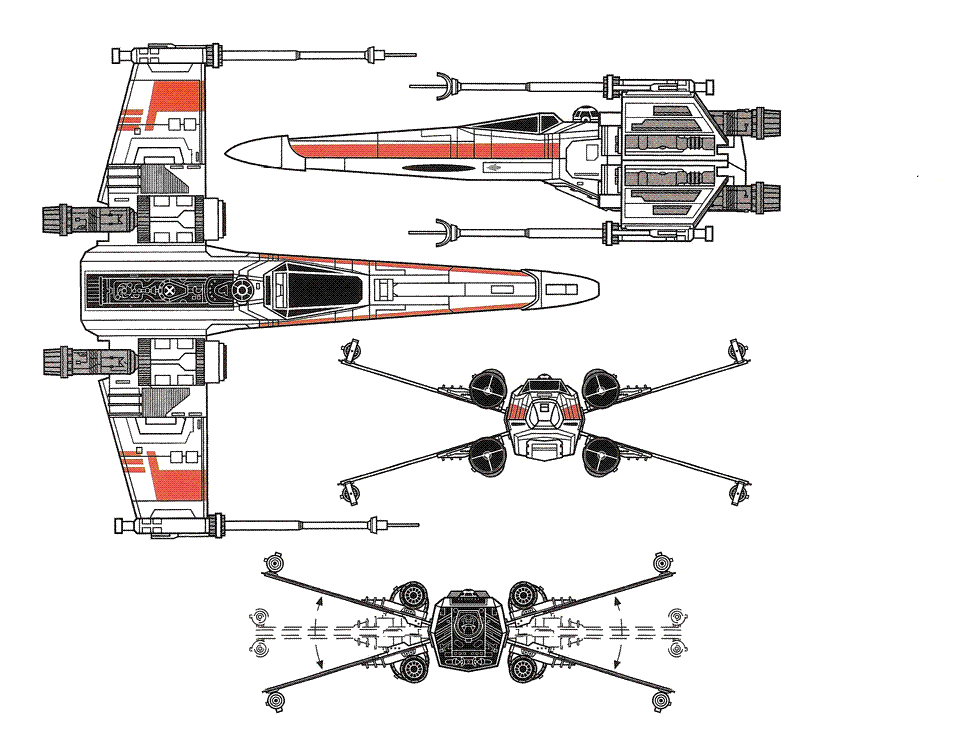 | | T-65 X-Wing Schematics. |
|---|
"The Incom T-65 X-Wing is the fighter that
killed the Death Star. An almost perfect balance
of speed, maneuverability, and defensive shielding
make it the fighter of choice for Rogue Squadron."-General Carlist RIEEKAN. |
The Incom "T-65 X-Wing Starfighter" was the primary all-purpose starfighter of the Rebel Alliance and its successor governments. Known for its versatility and exceptional combat performance, it was a favorite with Rebel and New Republic pilots. Possessing deflector shields, a hyperdrive, an R2 astromech for repairs and navigation, and a complement of proton torpedoes, the X-Wing allowed the Rebellion to launch raids in Imperial space with improved odds of a successful mission.The X-Wing played a major role in the Galactic Civil War following its capture on Fresia and the defection of its designers to the Alliance. It was most heralded as the fighter that broke the back of the Ancient Empire (now known to be the Palpatinian Syhith Empire); Later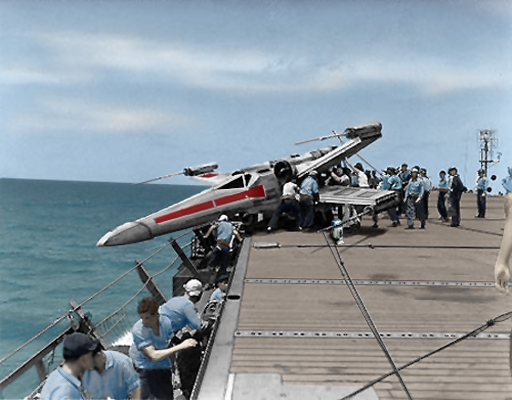 | | An X-Wing On UGS GOODWOOD. |
|---|
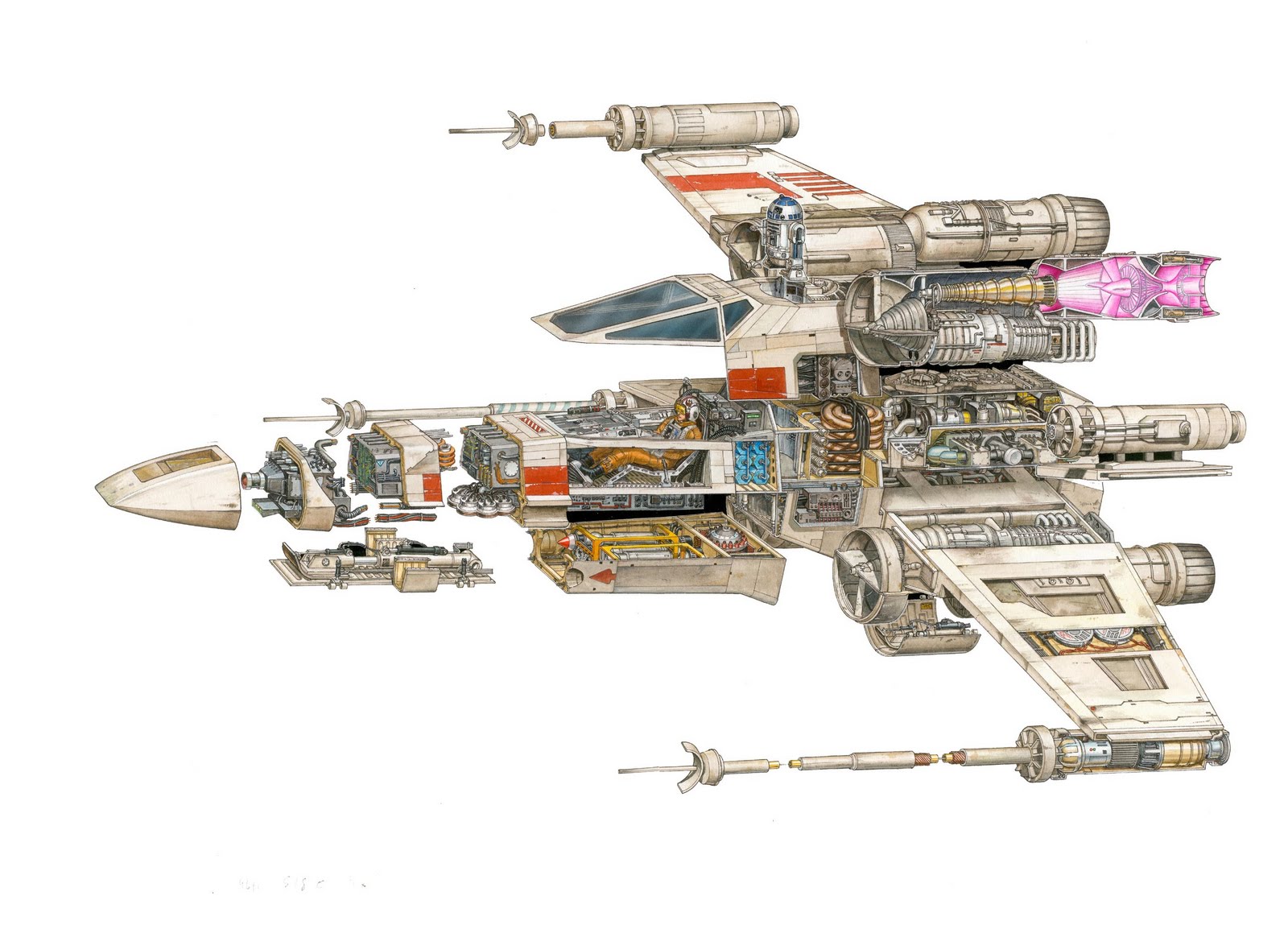 | | X-Wing Cutaway. |
|---|
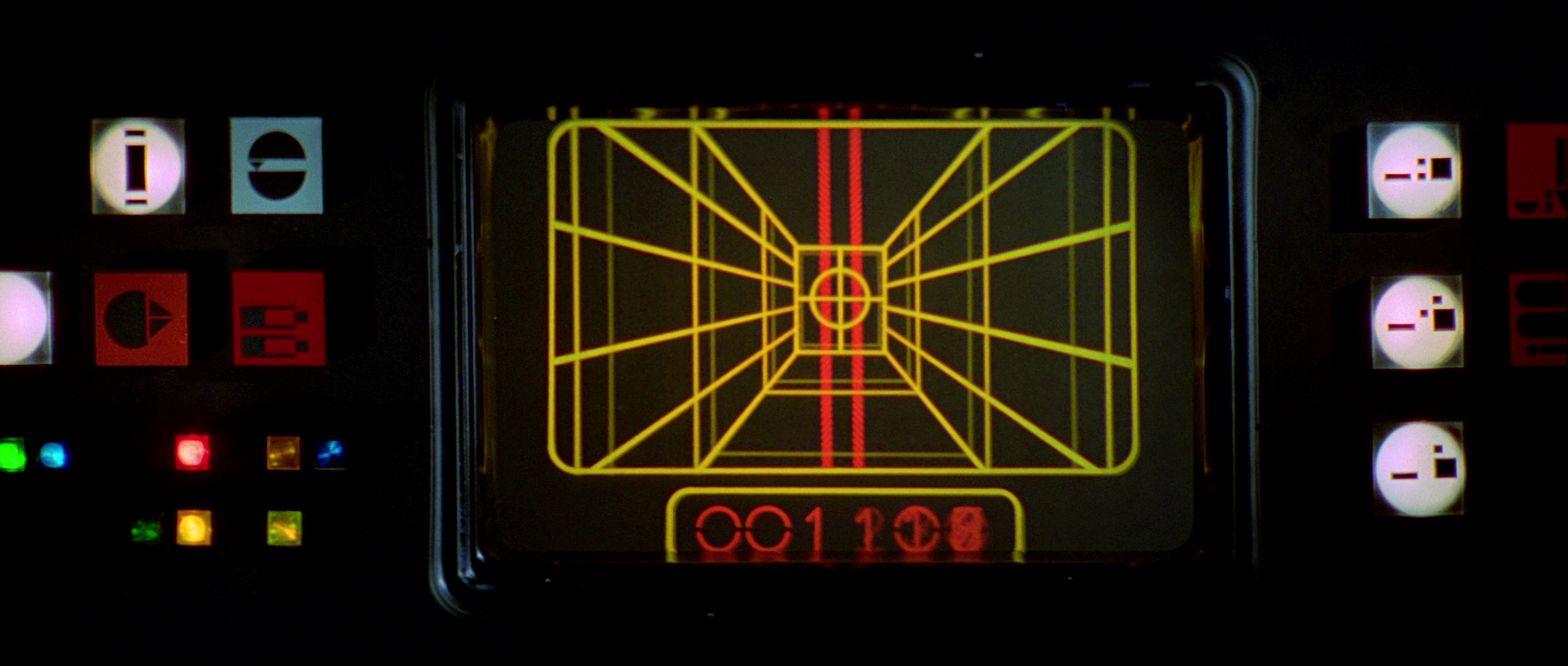 | | The Targeting Computer On An X-Wing. |
|---|
in the War, it would form the backbone of the Alliance Starfighter Corps, defending Alliance ships and leading attacks on Imperial vessels and installations. Most importantly, it could perform on near equal terms with the Empire's high-performance TIE fighters when handled by an experienced pilot.Pilots of Rogue Squadron favored using the multi-role X-Wing fighter, flying it as often as they could on most missions; they only employed other craft for highly specialized missions, such as missions that required ion cannons. The X-Wing was so predominantly flown by Rebel and New Republic forces that it became a symbol of their faction, much like the TIE fighter and Star Destroyer were symbols of the Galactic Empire.Thanks to continued upgrades to the basic design and improved tactics, the X-Wing series remained one of the galaxy's predominant multi-role starfighters for over 40 years.Technical Details:Airframe:X-Wings were reasonably maneuverable starfighters. They had two pairs of wing-like strike-foils, or S-foils, mounted at the rear of the craft on opposite sides. The foils on each side locked in place flush against each other; during combat, however, the foils were folded out to increase the spread coverage of the laser cannons mounted at the tips of the foils. This gave the craft its distinctive "X"-like appearance when viewed from the front or rear. The cannons on some earlier models could not be fired with the S-foils in locked position, perhaps as a safety feature. During hyperspace travel, the S-foils remained locked to conserve energy.In some models, its already impressive velocity was tweaked to allow short microbursts of speed. However, in order to utilize this feature, the weapons systems had to be switched off and the S-foils locked flush against each other. Other models utilized the locked foils while maintaining weapons, albeit at reduced power and accuracy.Armament:The X-Wing carried four Taim & Bak KX9 laser cannons (listen (help·info)), along with dual launch tubes for proton torpedoes. Other Warheads, such as concussion missiles, could be fitted as an alternative secondary weapon. However this required a considerable amount of time and effort on the part of the technical crews, and the overall versatility of the proton torpedo was ideally suited to the X-Wing's varied mission profile and was therefore the weapon of choice. During the early years of the Galactic Civil War, the Rebellion had a small supply of such weapons, due to their high price. During the Battle of Yavin, for example, most X-Wings carried only one set of such Warheads, including Luke Skywalker's ship. To aid in the firing of these weapons, an ANq 3.6 tracking computer was installed, giving pilots advanced tactical imagery to target, aim, and launch the torpedoes. This tracking computer had a success rate of 98.7%.The X-Wing's laser cannons had various settings:Single fire, where each cannon fired individually;Dual fire, where two cannons in opposite positions paired up and the pairs fired alternately;Quad fire, where all four cannons (one at each foil-tip) fired together, converging on the target; orStutter fire, where many underpowered beams were fired in rapid succession (added during Yuuzhan Vong War).Powerplant:Sublight propulsion was generated by four Incom 4L4 fusial thrust engines, which gave the starfighter relatively fast space and atmospheric speed. The X-Wing, unlike most fighters of the TIE Series, was equipped with a hyperdrive. This made it capable of entering hyperspace, and allowed it to operate independent from large support ships. Fighter squadrons could strike out on their own, without the need for a carrier; this autonomy suited the Rebellion, as it served their hit-and-run tactics perfectly.Flight SystemsThe fighter had space for one pilot, assisted by a droid (such as an R2-series astromech droid unit) in an external socket, which monitored the status of the craft and could make emergency repairs. The onboard droid also managed hyperspace calculations- Storing pre-calculated coordinates- Operated individual systems, and could even fly the craft without the aid of a pilot. This would allow the pilot to rest during missions, or save labor as the X-Wing was routinely moved around inside hangar bays.The X-Wing's flight controls were similar to those of the T-16 skyhopper, an airspeeder also produced by Incom Corporation. This meant pilots were able to adapt with minimal training. A skilled recruit with enough hours on a T-16 could pilot an X-Wing within hours of First entering the craft. Rebel technicians used this fact to train new pilots without using any of the expensive X-Wings. This also allowed future X-Wing pilots to be trained undercover on Empire-controlled worlds.Strike Foils ("S-Foils")S-foils, also known as Strike foils or Stability foils and, on occasion, as X-foils, were movable wings attached to the port and starboard sides of a starship, sometimes mounted with weaponry. Normally, the foils were locked in a "closed" position close to the ship for landing and usually for normal flight, but during high-stress situations, the foils were folded out. The Incom Corporation manufactured several starfighters with S-foils, including the ARC-170 starfighter and, later, the X-wing starfighter.Uses:Heat Disipation: Historically, S-foils had been developed to address overheating issues on wing-based starfighters. Because of the proximity of engines and weapons systems to narrow wiring that fit inside the thin wings, an excess of heat could cause mechanical meltdowns that would be devastating to the fighters' capacity to function. S-foils like those seen on a number of Republic starfighter models during the Clone Wars held radiator panels that dispersed heat and cooled the ships' interior mechanisms. S-foils were used when stress was being put on a ship's systems, usually when it was traveling at high speeds or locked in a dogfight. This idea would eventually evolve into the radiator panels of the Galactic Empire's TIE Series.Atmospheric Stabilization: Stabilization was a key issue, especially with larger craft. For shuttles, which were often used to transport dignitaries or sensitive cargo, maintaining stability in flight was pivotal. Large folding wings served to reduce turbulence and protect the craft's contents.Weapon Range: With the advent of newer starfighters like Incom's X-wing, the workhorse of the Alliance Fleet during the Galactic Civil War, S-foils took on a new purpose. Designers realized that they could increase spread coverage of weapons if they mounted them at the tips of the foils. Unfortunately, the new design had the side effect of decreasing the reaction time of patrol fighters. On most models with S-foil mounted laser cannons, the weapons could not fire with the foils in locked position. As such, a pilot would have to switch to attack mode before they could defend themselves. Even in fighters where that was not the case, accuracy was usually improved with the S-foils in attack position.HistoryAlliance Service:| "Time to retire those old Z-95s! These X-Wings can handle anything the Empire can throw at us!"-Raymus Antilles after the victory at Fresia. |
The X-Wing was originally designed by Incom Corporation for the Empire by Vors Voorhorian. It was directly descended from the old Z-95 Headhunter, built by Incom and Subpro, with lessons learned from the ARC-170 starfighter of the Clone Wars. After the Galactic Empire planned to nationalize the Incom Corporation, the entire engineering team defected to the Rebel Alliance with the prototypes hidden on Fresia.After four prototypes were extracted from Fresia during the Battle of Fresia, it First encountered Imperial forces in the Battle of Turkana. Many more of the ships were liberated from an Incom assembly facility prior to the Battle of Yavin. The Rebel Alliance soon began building its own X-Wings in clandestine factories scattered throughout the Outer Rim Territories, though decentralized production and the scarcity of various high-grade alloys used in the X-Wing's construction meant that squadrons sometimes had to endure agonizing delays before new fighters arrived. Besides its usage by the Rebel Alliance, a Starfighter volunteer squadron by the name of the Lightspeed Panthers utilized several customized T-65 X-Wing starfighters against several TIE/ln starfighters during the Fei Hu campaign, and demonstrated the fighter's superiority by taking 286 TIEs within 9 months while only losing 4 of their own X-Wings. This eventually led to the Empire's development of the TIE/IN interceptor and, later, the TIE Hunters, a direct counter to the X-Wing that possessed S-foils, proton torpedo launchers, and ion cannons.The X-Wing was continually updated throughout its design lifetime. The T-65B was the primary X-Wing fighter used by the Rebellion in the Galactic Civil War. There was also the enhanced T-65C-A2 develped by the Alliance. These versions were rare during the Galactic Civil War due to limited production capabilities. The T-65AC4 was another variant type produced during the New Republic. Its engines allowed it to fly at speeds comparable to an A-wing. One notable design, the T-65D-A1, replaced the astromech droid with an internal computer core for hyperdrive jump calculations but was considered a failure (partially due to ease of sabotage). The TX-65 was the X-Wing trainer variant.Despite the legendary combat prowess of the X-Wing however, 70 percent of X-Wing sorties throughout the Galactic Civil War were reconnaissance missions, and Wing Commanders were taught to attack in strength "only when the results will be spectacularly successful."New Republic service:It had been intended that the X-Wing series would be replaced by the E-wing approximately six years after the Battle of Endor, but initial design issues relating to the weapons placement delayed wide-spread introduction into the New Republic military. Wide-scale deployment of the E-wing did occur (most notably in Fifth Fleet), but X-Wing production continued on and may have equipped fighter squadrons not "at the tip of the spear." One notable exception was Rogue Squadron, the Republic's most elite fighter squadron, which was known for its almost exclusive use of the X-Wing.Shortly before the Yuuzhan Vong War, the New Republic fielded the J-series of X-Wing, supplementing the more advanced and more expensive Series III E-wing. The XJ added a Third torpedo bay where a cargo bay was previously, increasing the proton torpedo load up to nine. Engines, lasers, and avionics were also improved. The XJ was greatly improved in all respects over the earlier designs and was initially issued to starfighter squadrons with Jedi pilots.Three variants were developed, culminating with the T-65J3: the ultimate evolution of the X-Wing. The X-Wing's stutter fire capability was added in the invasion of the Yuuzhan Vong to overwhelm their singularity defenses. Some paramilitary groups were also equipped with earlier J-series fighters (probably the T-65J or the T-65J2); system-defense forces and poorer paramilitary groups may have had X-Wings of varying age and capability. Many older X-Wings were rebuilt into the T-65BR reconnaissance variant.Galactic Alliance ServiceBy the time of the Killik/Chiss conflict, two new variants of the X-Wing were introduced. The First was the XJ5 series, also referred to as the ChaseX. The second variant was the StealthX. The XJ5s were mainly used by the Reconstruction Authority Space Patrol. The Jedi tended to use StealthX or earlier XJ3 series. The StealthX was a covert strike craft, equipped with features that reduced its visibility both visually and to sensors, though it could be located if it was silhouetted or launching proton torpedoes. The StealthX was described as being smaller than the XJ model, which was already half a meter shorter than the T-65C. The StealthX was also described as being a derivative of the XJ3, and likely classified as the XJ4.By the time of the Second Galactic Civil War, the Galactic Alliance was fielding XJ6s, and Luke Skywalker's Jedi-filled Hardpoint Squadron used these exclusively. The XJ7 would soon follow, being used at least by Rogue Squadron.There were two conflicting systems of identification for the X-Wing. The basic designation "T-65" was constant, but the version modifier was inconsistent. In one of them, a letter was appended to the end in increasing value (T-65A, T-65B, T-65C, T-65D, etc.). A second system, the suffix "AC4" was used.UGC Service
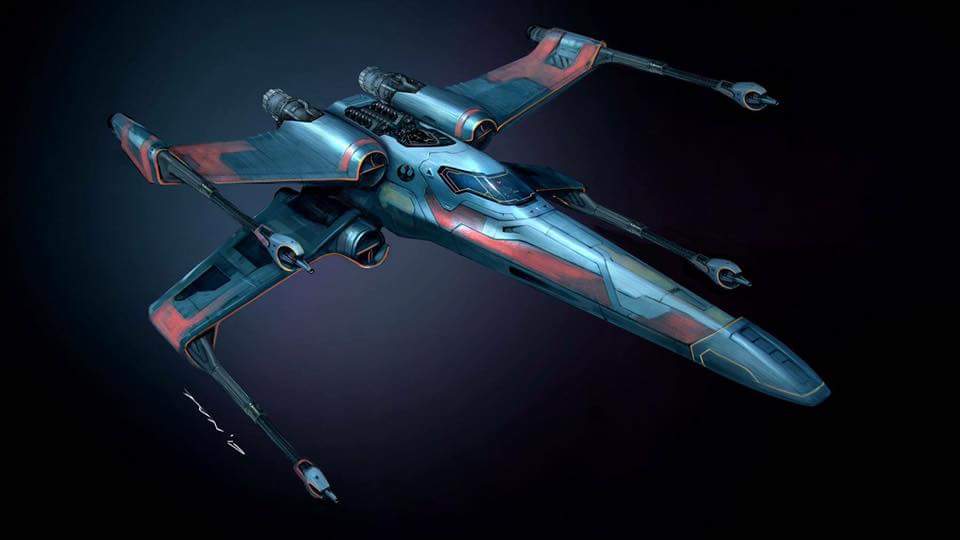 | | UGC Commisioned X-Wing. |
|---|
The UGC took on about 1,000 new X-Wings With a slight body style adjustment (to distinguish UGC from non-UGC X-Wings) as a diplomatic matter, but disdained of them rather quickly; They aren't designed to accommodate Robotech Expeditionary Forces battle doctrine in any meaningful fashion. The craft were sold to regional Robotech Defense Forces', and do receive support from the UGC, making them available for deployment, but that's unlikely to happen any time soon. The X-Wing is one of the Rakatan Galaxies relatively few exports, being sold to RDF's in almost every galaxy and many systems; So much so that the Rakatan's don't actually export them so much as build regional factories in the various galaxies to build them. X-Wing aero-space frame Uglies are also widely see, most especially the X-Ceptor (a X-Wing hull with TIE/IN wings, which are highly popular with CDF's). They're also gaining popularity with Private Militry Contractors specializing in anti-pirate duties and ironically pirates, who build cloned versions (sometimes of inferior quality; deduct up to 10% to MDC and weapons range).The UGC X-Wings did advance the design somewhat, developing lessons learned over time from all previous Rakatan fighters. The Strike foils also have solar arrays (from the TIE Series, though each individual one is much smaller), the lead edges of the S-Foils are also more aerodynamic (these X-Wings could actually fly on purely aerodynamic principles alone in an atmosphere with standard jet engines), the Astromech Droid is ventral rather than dorsal inserting (allowing them to be taken off in field conditions), the navicomputer has a SECOND integrated astromech droid (on an auto eject system tied to the pilot's ejection system), a micro-drone for deep-fighter repairs where the astromech can't reach, and retractable wheels in the landing struts, making unpowered ground movement faster and easier. However, this just wasn't enough to save the programs (despite being the First fully independently inter-planetary capable starfighter in UGC inventory- and without retrofit kits at that).Cultural Influence:During the Rakatan Civil War, toy X-Wings were apparently popular among children who wished to re-enact the Rakatan Civil Wars; This was reminiscent of the Clone Wars, in which children would often play with action figures and vehicles to create their own version of that War, occasionally re-envisioning events.TIE v. X-Wing:The TIE Series is associated with the Syhith Orders, especially the Palpatinian Order. The X-Wing is associated with the Geh 'Dia Orders, especially the Skywalkers. Choosing one over the other is kind of an indicator of preference in orders, especially when livery is indicated (Red TIEs to Palpatinians, Red X-Wings to Skywalkers); Yet strangely, despite the UGC's clear favoring of the Geh 'Dia Order (the larger order, and not too closely to the Skywalkers in particular), they also generally favor the TIE/IN over the X-Wing, though the X'Ceptor over both. More than one Rakatan has asked "Who's side are they really on?" to which a Galactic would answer "Our own.Vehicle Type: Aero-Space Fighter/Attacker/Tactical Reconnaissance.Crew: One. A two seater specialized versions have been built; A one-of-a-kind three seater was built by the Skywalker Order specifically for their founder. It now sits in the Geh 'Dia Museum, but can be made flight ready in about 2 hours.Passengers: None. Unsafe.M.D.C. By Location: |
- E.S.M.: Radar Detector. Passively detects other radars being operated.
- Radar: Combat grade radar. Range 100 miles, can track up to 50 individual targets. 95% reliability (24% against unfriendly stealthed vehicles).
- Blue Force Tracker: Identifies friend from foe. Overlays the information on both the radar and HUD, ensuring that friendly forces are not accidentally targeted.
- GPS: Standard tracking device. Ties into the Blue Force Tracker.
- Anti-Jamming System: Reduces Electronics Countermeasure by 3/4 (decrease skill level appropriately).
- HUD: Displays maps, radar, targeting information, and any OTHER information the wearer wants directly in front of the user.
- FLIR/SLIR: Forward and Side Looking Infrared. Allows pilot to get visuals on targets at night.
- AJP: Active Jamming Pod. Causes -25% to detection but when it is active, other vehicles/bases can detect that it is jamming, and some missiles will home in on jamming signals. Jamming also causes a -4 penalty to all radar guided weapons. The jamming pod is only mounted inside the port taileron.
- Oxygen Rebreather System: Extends pilots air supply to 100 hours; Cartridge MUST be replaced after that period of time.
- Grav Clamps: Reversing the polarity in the repulsors of the fighters allows them to adhere to the hulls of Warships and the exteriors of SOME buildings.
- Combat/Targeting Computer: Records all enemy and friendly activity over the course of time; Can replay that activity for the pilot, assign target designation numbers, and track likely damage based on mathematical formulas (i.e. "Right leg red" badly damaged/destroyed, "head green" not damaged, etc). Displays this information as a pop up in the HUD on request by the pilot.
- Towed XTNDR RADAR/Radio Antenna Extender: A simple 10 lb. pod is towed 100 feet behind the fighter. A fiber-optic cable relays the data collected from the XTNDR Pod to the fighter's computers.
- M.D.C. By Location:
- Pod: 50
- Fiber Optic Cable: 10
- Effect: Extends range of any sensors 10 times (or defeats other penalties in a 5 mile area).
- Video Camera: Records from the HUD and HDD. 50 hours of recording available.
- Type-11 wide band radios: Effective 10 mile range, auto encrypt/decrypt. Works on standard radio band wavelengths, so it can still be jammed (if the enemy knows the frequencies).
- MRA 6 Radios: Allows real time, continuous radio link up with friendly forces in the area via satellite relay over laser radio signals, preventing jamming, and automatically encrypts/decrypts same to prevent eavesdropping.
| - Virtual Map: Displays a continuously-updating map of local terrain for the pilot. Takes data from other friendly units in the area. Effective land navigation of 85% as updates come. Good to 500 miles. Specific range can be adjusted in 100 mile increments.
- Full Range Sensory Systems: Infrared, Ultra Violet, Color Filters, and Thermal Imager: Range: 10 miles; Magnification: 40 times
- Decoys: Despite the relative commonality of the Launched/Towed Decoy Pods and Anti-Missile Chaff/Flare Dispenser systems, the simpler Decoys originally used on the Starfighter is the one still in use. The reason they have not been switched out for the more effective L/TDP and AMC/FD systems is the Steinerian sense of superiority; However, privately owned combat ready craft have been retro-fitted to the better system. The decoys themselves are specially modified Mini-Missiles that produce burning globs of magnesium/aluminum alloy to confuse both radar AND heat sensory systems, as well as creating a lot of smoke to obscure the fighter. Note: Though the modified mini-missiles combine smoke flares, AMC/FDs, and LDP's, they aren't powerful enough for use with Destroids/Guardians/Etc. Reduce effects by 20% against smart missiles (add +20% to rolls for smart missiles).
- Effect:
- 01-50: Enemy missile or missile volley detonates in chaff cloud- Missiles are all destroyed.
- 51-75: Enemy missile or missile volley loses track of real target and veers away in wrong direction (may lock onto another target).
- 76-00: No effect, missile is still on target.
- Also note that the chaff cloud will also blind nearby heat sensors (and optically based sensors at night) for 1 melee. They will suffer the following penalties: Reduce melee attacks/actions, and combat bonuses by half. Also, a cloud of smoke approximately 253 feet.
- Duration: 1D4 melee rounds.
- Rate of Fire: Once per melee.
- Payload: 6 chaff/flares.
- Survival Pack: A pack of simpler emergency survival supplies: Pup tent, sleeping bag, black light, GPS, First aid kit (bandages, gauze, bandage tape, pads, antiseptic/analgesic), plasma torch (for small repairs and starting fires), repair kit (with MDC Repair Spray), sewing kit (a small spool of thread and 5 needles), 7 star flares (250 foot apogee), 7 white parachute flares (1,500 foot apogee), 100 foot of black or brown parachute cord (150 lbs tensile strength), 2-5 days rations, 2 gallons water, water purification kit (good for about 10 gallons), manual-inflating liferaft (for at-sea abandonment), self-inflating lifevest (15# buoyancy). The liferaft can also double as a Pup Tent if so desired (though most pilots prefer to use a parachute for that, if anything, due to the fact that it is easier to hide).
|
